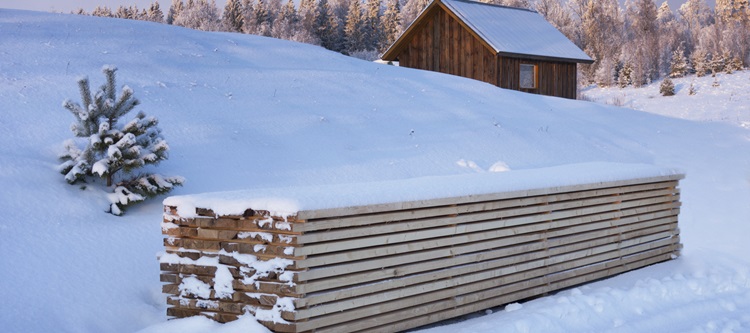In this article:
Massachusetts winters are notorious for their harsh weather conditions, posing unique challenges for construction projects. From freezing temperatures to heavy snowfall, winter weather can significantly impact the progress, safety, and success of a construction site. To ensure an efficient construction process during the colder months, proper planning and preparation are essential. Below, we’ll provide valuable tips on how to protect a construction site in Massachusetts during winter, including advice on planning, materials, and safety considerations. By implementing these strategies, homeowners can navigate the winter season with confidence and ensure the successful completion of their construction projects.
1. Strategize for Winter Weather.
Before winter arrives, it’s crucial to plan and prepare for potential weather-related challenges. Consider the following factors:
Construction Schedule:
Evaluate the project timeline and schedule critical tasks, such as foundation work, framing, and exterior installations, before the onset of winter. Completing these tasks in milder weather can minimize potential disruptions caused by snow and freezing temperatures.
Communication with Contractors:
Maintain open lines of communication with contractors and subcontractors. Discuss the impact of winter weather on the project timeline and address any potential delays or modifications required to accommodate weather conditions.
Temporary Structures:
If the construction project involves temporary structures, such as job site offices or storage units, ensure they are properly insulated and equipped to withstand winter conditions. Consider heating options and necessary precautions to protect equipment and materials.
2. Select Winter-Resistant Materials.
Choosing the right materials for a winter construction project is crucial to prevent damage and maintain structural integrity. Consider the following tips:
Concrete Mixtures:
Opt for concrete mixtures that are designed specifically for cold weather. These mixtures include additives that enhance curing and reduce the negative effects of freezing temperatures on the concrete.
Insulation:
Prioritize insulation throughout the construction process, including walls, roofs, and foundations. Proper insulation minimizes heat loss, prevents freezing of pipes, and promotes energy efficiency.
Weather-Resistant Exterior Finishes:
Select exterior finishes and materials that can withstand exposure to moisture and fluctuating temperatures. This includes durable siding, weather-resistant paint, and properly sealed windows and doors.
3. Protect Against Frost and Snow Accumulation.
Winter in Massachusetts brings the risk of frost and heavy snowfall. Safeguarding the construction site against these challenges is essential. Consider the following measures:
Frost Protection:
Take steps to protect the ground and foundation from frost. This can include insulating the ground, utilizing ground heaters, or installing frost barriers to prevent frost penetration.
Snow Removal Plan:
Develop a comprehensive snow removal plan to keep the construction site accessible and safe. Arrange for the timely removal of snow from walkways, driveways, and staging areas. Ensure that snow removal does not damage the construction site or compromise safety.
Temporary Roof Covers:
For partially completed structures, consider installing temporary roof covers to protect against snow accumulation and prevent water damage. These covers can provide temporary protection until the permanent roofing system is installed.
4. Implement Safety Measures.
Winter construction comes with increased safety risks. Prioritize the following safety measures to protect workers and maintain a secure construction site:
Winter Safety Training:
Ensure that all workers receive proper training on winter-specific safety protocols, such as working in icy conditions, handling snow removal equipment, and preventing frostbite and hypothermia.
Adequate Lighting:
With shorter daylight hours during winter, ensure that the construction site is well-lit to prevent accidents and provide a safe working environment.
Slip and Fall Prevention:
Implement measures to prevent slips and falls, such as removing ice and snow from walkways, installing anti-slip surfaces, and providing proper footwear and safety gear to workers.
5. Monitor Weather Conditions.
Staying updated on weather forecasts and conditions is vital for effective winter construction management. Consider the following:
Weather Monitoring:
Regularly monitor weather reports to anticipate upcoming storms, freezing temperatures, or other extreme weather events. This allows for proactive planning and adjustment of work schedules if necessary.
Site Monitoring Systems:
Utilize on-site weather monitoring systems to track temperature, humidity, and other relevant weather parameters. This data can provide valuable insights into potential risks and allow for informed decision-making.
Emergency Preparedness:
Develop an emergency response plan to address unforeseen weather events, such as blizzards or extreme cold. This plan should include provisions for worker safety, securing the construction site, and protecting equipment and materials.
Conclusion
Preparing a construction site for a Massachusetts winter requires careful planning, attention to materials, and a focus on safety. By implementing strategies such as proactive scheduling, selecting winter-resistant materials, protecting against frost and snow accumulation, and prioritizing safety measures, homeowners can navigate the challenges of winter construction with confidence. Remember to communicate effectively with contractors, monitor weather conditions, and adapt plans as needed to ensure a successful and secure construction project. With proper preparation and a focus on winter-specific considerations, homeowners can overcome the weather-related obstacles and achieve their construction goals even in the harshest of Massachusetts winters.








